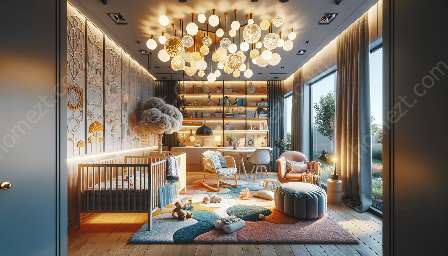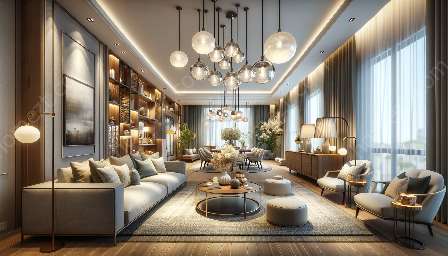Creating the perfect lighting placement in a nursery or playroom is an art form that requires both practicality and creativity. The right lighting can enhance the overall design, atmosphere, and functionality of these spaces, making them more inviting and stimulating for children.
The Importance of Proper Lighting
Lighting is crucial in nursery and playroom design for several reasons. First and foremost, it affects the safety and comfort of the children who spend time in these spaces. Well-placed lighting can help to prevent accidents and injuries by providing adequate illumination for various activities, such as play, reading, and crafting.
Additionally, lighting has a significant impact on the mood and ambiance of the room. Properly positioned lights can create a warm and welcoming environment, fostering a sense of security and coziness for children.
Types of Lighting
Before delving into lighting placement, it's essential to consider the different types of lighting that can be used in a nursery or playroom:
- Ambient Lighting: This is the primary source of light in the room, providing overall illumination without causing glare or harsh shadows. It creates a comfortable and inviting environment for play and relaxation.
- Task Lighting: Task lighting is focused on specific areas where activities such as reading, drawing, or playing games take place. It ensures that these tasks can be performed comfortably and safely.
- Accent Lighting: Accent lighting is used to highlight specific features or areas, such as a play corner, artwork, or decorative elements. It adds visual interest and enhances the room's overall design.
Lighting Placement Tips
When it comes to placing lights in a nursery or playroom, there are several key considerations to keep in mind:
- Accessibility: Ensure that light switches are easily reachable for both children and adults. Consider using dimmer switches to adjust the level of brightness according to different activities and times of day.
- Safety: Avoid placing lamps or overhead lights directly above play areas to minimize the risk of accidental collisions or damage. Opt for fixtures with enclosed bulbs and sturdy, child-safe materials.
- Flexibility: Incorporate a mix of different lighting types to accommodate various activities and moods. For example, a combination of ambient, task, and accent lighting can provide a versatile and dynamic lighting scheme.
- Zoning: Divide the room into specific zones, such as a reading nook, play area, or craft corner, and tailor the lighting for each zone accordingly. This helps create distinct spaces within the room and allows for more targeted illumination.
- Height: Consider the height of the light fixtures to ensure they are safely out of reach of curious hands, yet still provide adequate illumination across the room. Wall-mounted or pendant lights can be great options for achieving the right balance.
Designing for Nurseries
When designing lighting placement for a nursery, it's essential to prioritize soft, soothing lighting that promotes relaxation and rest. Here are some tips specifically tailored for nurseries:
- Nightlights: Incorporate gentle nightlights to provide a subtle glow during nighttime routines, such as feeding and comforting the baby. Opt for motion-activated or dimmable nightlights for added convenience.
- Soft Glows: Choose lamps and fixtures with warm, diffused light to create a comforting atmosphere for quiet moments and bedtime routines. Consider the use of floor lamps and gentle wall sconces to avoid harsh lighting.
- Natural Light: Maximize natural light by positioning cribs and nursing chairs near windows. Use light-filtering curtains or blinds to control the intensity of natural light during nap times and bedtime.
Creating Playful Spaces
In contrast to nurseries, playrooms benefit from vibrant and energetic lighting setups that cater to a wide range of activities and imagination. Consider the following when planning lighting placement for a playroom:
- Colorful Fixtures: Use playful, colorful lampshades and light fixtures to add a lively touch to the room. Consider options with adjustable brightness to adapt to different play scenarios.
- Task-specific Lighting: Install dedicated task lighting for art stations, reading zones, and play areas to ensure ample illumination for various activities. This can include adjustable desk lamps and overhead spotlights.
- Mood Lighting: Introduce fun and interactive lighting elements, such as color-changing LED strips or interactive wall lights, to engage children's creativity and make the room feel like a magical space.
Conclusion
Lighting placement in nursery and playroom design is a multifaceted aspect that combines safety, functionality, and aesthetics. By carefully considering the types of lighting, placement strategies, and specific requirements of nurseries and playrooms, it's possible to create well-lit and inviting spaces that cater to the needs and preferences of children.



